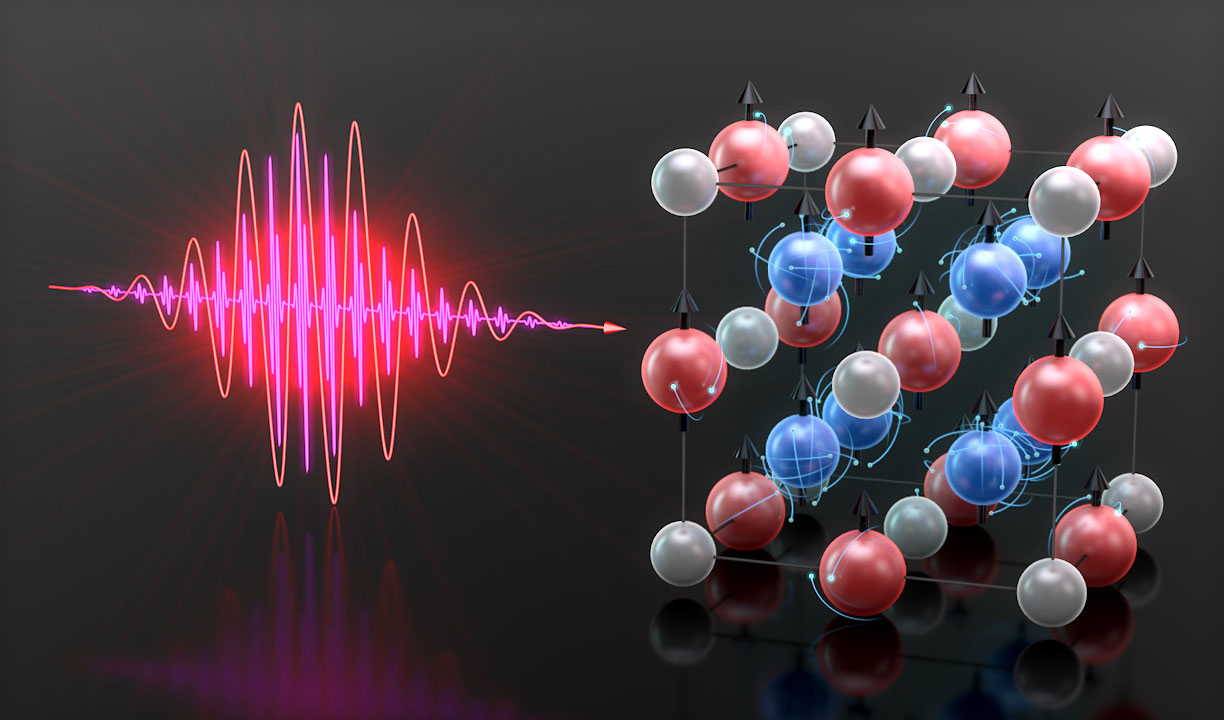A tunable EUV light probe can capture competing spin effects in a complex magnetic alloy composed of cobalt, manganese and gallium [Image: Steven Burrows/Murnane and Kapteyn groups, JILA]
Researchers in the United States and Europe have devised an optical method that can probe and manipulate ultrafast spin dynamics in a complex magnetic material with unprecedented precision (Sci. Adv., doi: 10.1126/sciadv.adi1428). They studied an intermetallic alloy of cobalt, manganese and gallium, known as a Heusler compound, that holds promise for future thermoelectric and spintronic devices.
Harnessing magnetic spin
The Heusler compound has two distinct magnetic sublattices, formed by cobalt and manganese, yielding dynamic spin behavior that can be induced and controlled by light. However, harnessing these unusual magnetic properties in useful devices requires a detailed understanding of spin effects in these materials and how they evolve over time.
In the new study, the researchers first used a femtosecond laser to excite electrons in the Heusler compound, instigating dynamic spin pathways that alter the magnetic properties of the material. They then tracked the re-orientations of the spins using bursts of extreme ultraviolet (EUV) light that were produced through high-harmonic generation.
Varied wavelengths
Such EUV light probes have already been used to measure element-specific spin dynamics in alloys and multilayered materials. In this case, however, the researchers also varied the wavelength of the EUV light to resolve changes in magnetic behavior across the full absorption spectrum of the cobalt and manganese sublattices. Combining these measurements with a sophisticated theoretical model allowed the team to discern competing spin effects and follow their evolution over timescales shorter than 100 femtoseconds.
Within the first 50 femtoseconds, for example, when the incident light field is still weak, the response is dominated by spin flips—in which the orientation switches within the same lattice site. Over longer timescales, however, the stronger electric field induces more spin transfer between sites in the cobalt sublattice, as well as between the cobalt and manganese sublattices.
Influencing spin changes
By varying the power of the excitation laser, the researchers also found that they could influence spin changes within the material.
By varying the power of the excitation laser, the researchers also found that they could influence spin changes within the material. At lower powers, they observed more spin transfer, which increased the magnetic moment of the cobalt sublattice while reducing it in the manganese component. On the other hand, at higher powers, demagnetization pathways caused both sublattices to lose their magnetic properties.
The researchers believe that these new insights will help ongoing efforts to understand how the spins in these novel materials can be manipulated to enhance their magnetic and electronic characteristics. "Using spin instead of electronic charge could create devices with less resistance and less thermal heating, which would make them faster and more efficient," said co-first author Sinéad Ryan, a graduate student at JILA at the University of Colorado Boulder, USA.

